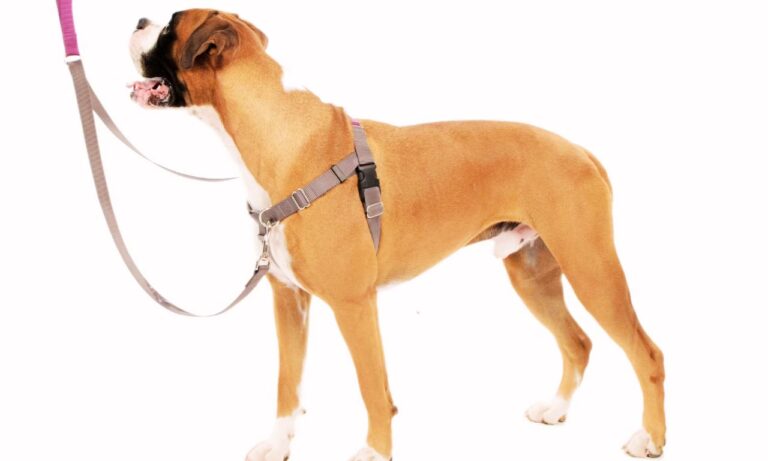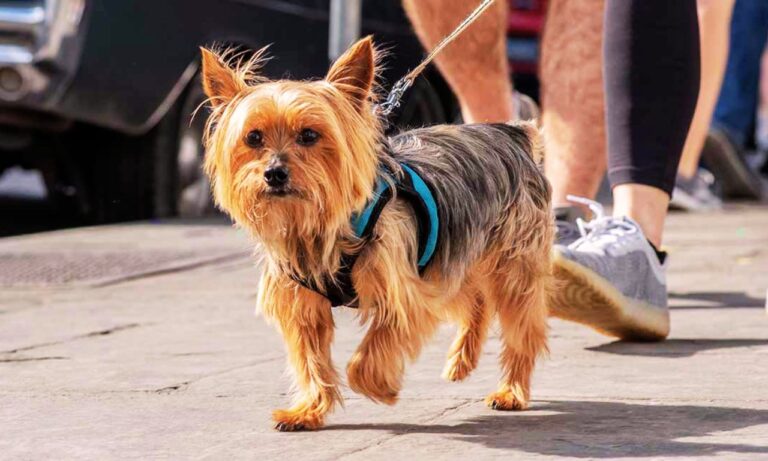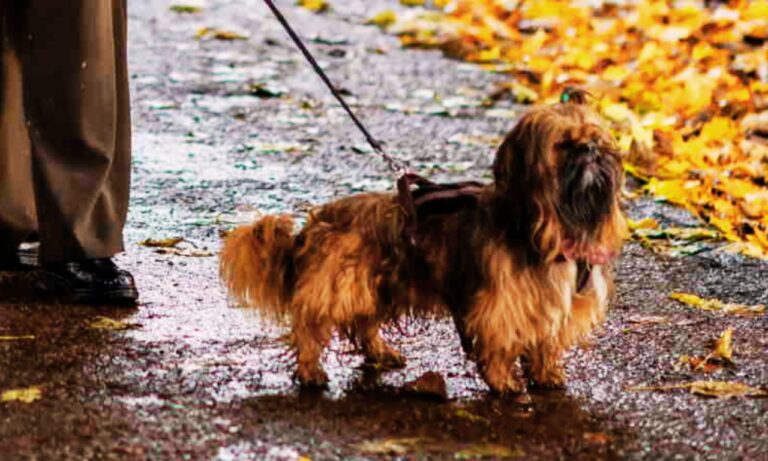When it comes to ensuring the safety and comfort of your Siberian Husky, selecting the right collar is crucial. Huskies, known for their energy and occasional tendency to slip out of collars, require a well-fitted, durable, and properly tightened collar.
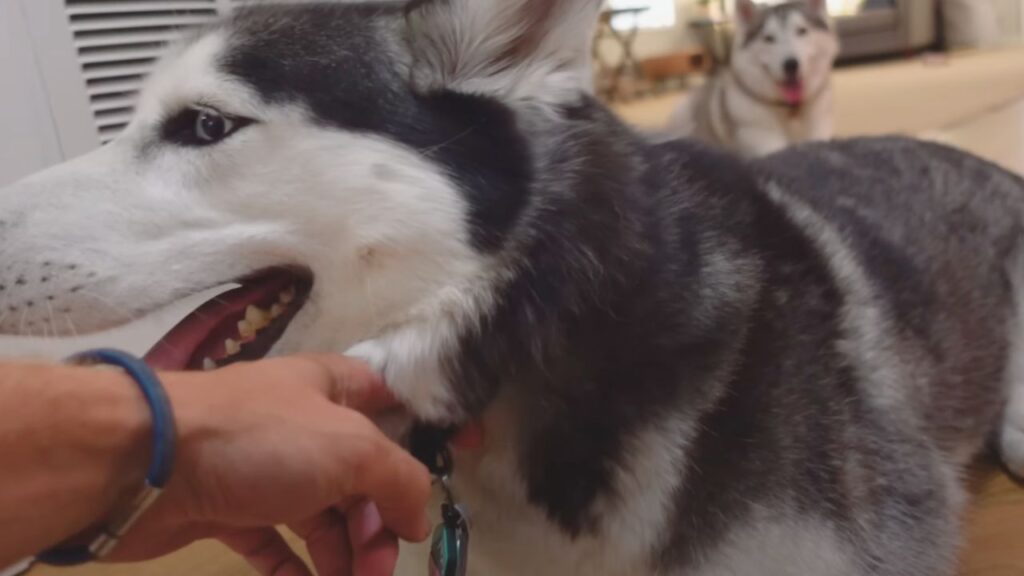
But How tight should a Husky collar be? This guide breaks down the essentials of collar fitting for Huskies, helping you avoid common pitfalls like collars that are too tight or too loose. Check out the Cane Corso growth weight chart and simple nutrition plans to keep your pup healthy.
Blog Highlights
ToggleThe Two-Finger Rule: A General Guideline
So, How tight should a Husky collar be? The most common advice for fitting any dog collar, including for Huskies, is the two-finger rule. Once the collar is placed around your dog’s neck, you should be able to comfortably slide two fingers between the collar and the neck. This ensures that the collar is neither too tight nor too loose.
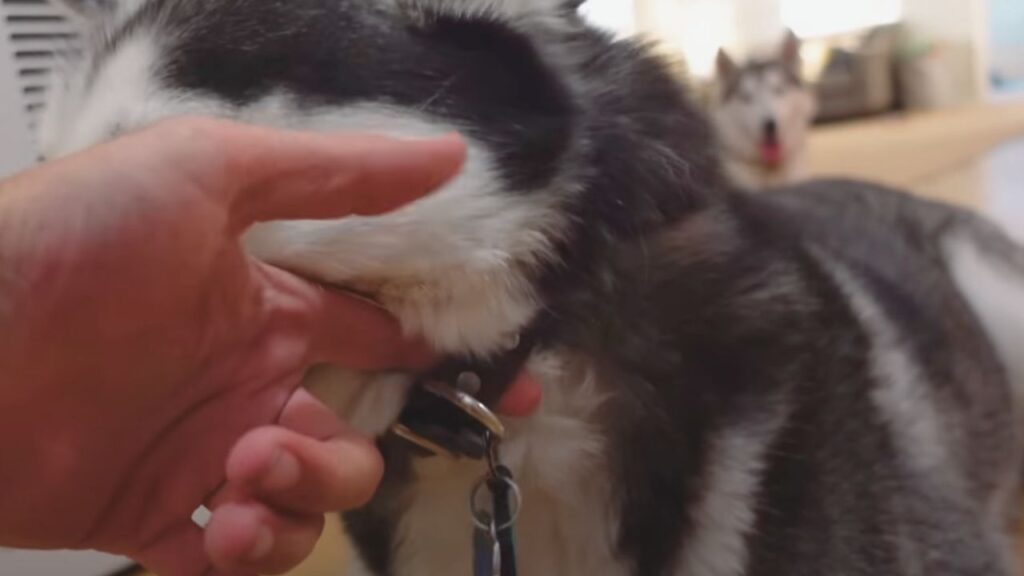
- Too tight: If the collar is so tight that you can’t fit your fingers, it can lead to discomfort, restricted breathing, or even injury to the trachea.
- Too loose: If there’s too much room, your Husky might slip out of the collar during a walk, which could lead to dangerous situations, such as running into traffic or other hazards.
I’ve answered some common issues with huskies:
These simple adjustments can quickly resolve common issues and keep your Husky safe and comfortable!
Huskies and Their Unique Neck Structure
Huskies have a unique neck structure, with necks often being similar in circumference to their heads. This makes them more prone to slipping out of collars compared to other breeds. As a result, it’s important to pay extra attention to collar tightness.
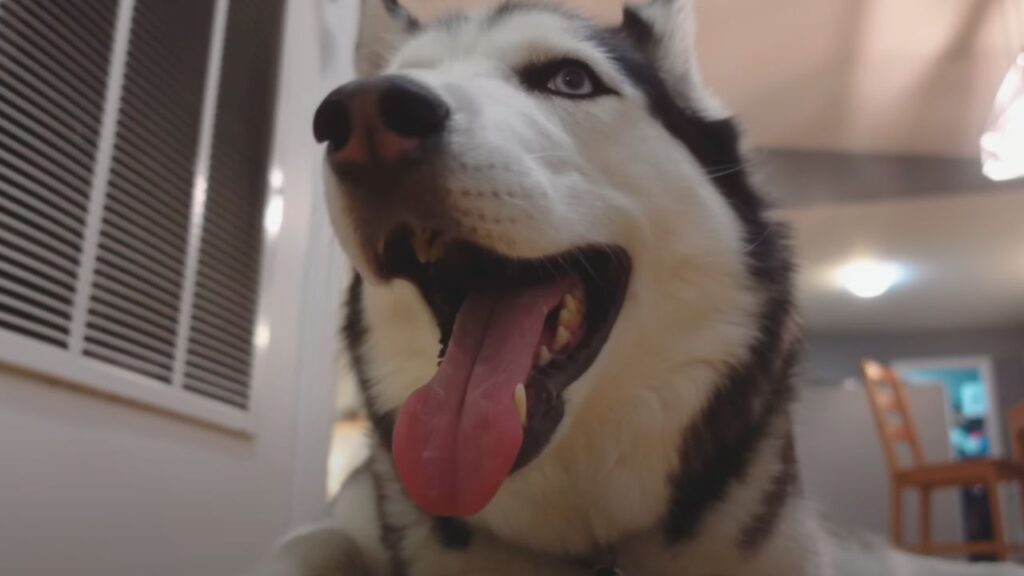
For Huskies, a collar that is too loose poses a real risk. A common mistake is underestimating their ability to wriggle free, especially when they are excited or pulling on the leash. A snug collar—tight enough to stay secure but loose enough for comfort—is key. Some Huskies may benefit from a Martingale collar, which tightens when they pull but doesn’t choke, making it ideal for breeds prone to escaping. Learn if a Cane Corso is a high maintenance dog and what that means for your care routine.
Why Collar Tightness Matters For Huskies?
Improperly fitted collars can cause several health issues for your Husky:

- Choking: A collar that’s too tight can press on your dog’s trachea, causing breathing difficulties or even tracheal collapse. This is particularly concerning for dogs that pull on their leash, applying extra pressure to their necks.
- Skin irritation: Tight collars can rub against your dog’s skin, leading to sores, hair loss, and irritation. On the flip side, a loose collar can also cause rubbing and discomfort as it moves around during walks.
- Injury: Over time, a tight collar can cause muscle strain or injury to the neck. In severe cases, prolonged tightness can result in embedded collars, where the skin starts to grow over the collar due to constant pressure, leading to infections.
Checking the Fit: Signs of Too Tight or Too Loose Collars
Even with the two-finger rule, it’s important to regularly check the fit of your Husky’s collar. Here are some telltale signs:

Too Tight:
- Your Husky shows signs of discomfort, such as constant scratching at the collar.
- Difficulty breathing or coughing, especially when pulling on the leash.
- Visible skin irritation or hair loss around the collar area.
Too Loose:
- Your Husky can easily slip the collar over their head.
- The collar frequently rotates or moves around the neck during walks.
Regularly adjusting the collar’s fit is essential, particularly for growing puppies. Huskies, especially when young, can grow quickly, making it necessary to frequently check if the collar is still properly adjusted. Find the best collars for Australian Shepherd to fit their active and stylish needs.
Signs That Your Husky’s Collar Needs Adjustment
Monitoring your Husky’s behavior and physical condition can alert you to a collar that needs adjusting. Here are some key indicators:
- Excessive scratching at the collar: This is a common sign that the collar might be too tight or irritating your dog’s skin.
- Fur loss or redness under the collar: Constant rubbing can cause hair loss or skin irritation, signaling that the collar is either too tight or made from a material that irritates your dog’s skin.
- Difficulty breathing or coughing: If your Husky is pulling hard on the leash and starts coughing, this could indicate that the collar is putting pressure on their trachea. This is particularly common in dogs that are prone to pulling, and using a harness in such cases can help relieve this pressure.
- Slipping out of the collar: On the other hand, if your Husky can easily slip the collar over their head, it’s too loose. This can be dangerous during walks, especially in unfamiliar environments where your dog might run into traffic or get lost.
What Are the Special Considerations for Huskies?
- Leash Training: Huskies are known for their high energy and strong pulling instincts. If your Husky frequently pulls on the leash, using just a collar can lead to neck strain or injury. Consider combining a collar with a harness, particularly a no-pull harness, to distribute pressure across the chest and reduce strain on the neck.
- Collar Materials: The material of the collar can also impact comfort and safety. Nylon or leather collars are commonly recommended for Huskies due to their durability and comfort. Always avoid using collars with sharp edges or those made from abrasive materials, as they can exacerbate skin irritation.
- Martingale Collars: As mentioned earlier, Huskies are escape artists. A Martingale collar can be a lifesaver for Huskies that tend to back out of regular collars. The Martingale collar tightens slightly when your dog pulls but won’t choke them, making it both safe and secure. Get tips on how to get your Australian Shepherd to stop barking with effective training methods.
What Are the Collar Alternatives for Huskies?
While collars are a must for ID tags, some owners may find that their Husky is better suited to a harness for walks. Here are some alternatives:
- Harnesses: These offer more control during walks and help avoid neck strain by distributing pressure across the chest. A well-fitted harness can also prevent escape, which is a common issue with Huskies.
- Head Collars: For Huskies that pull excessively, a head collar (like a Gentle Leader) can be an effective tool. It provides control over the head, making it easier to manage strong pullers, but should be used with proper training to avoid discomfort.
How to Properly Measure for a Collar?
To measure your Husky’s neck size, use a soft measuring tape or a piece of string. Wrap it around the base of the neck where the collar will sit, ensuring that the tape is snug but not tight. Once you have the measurement, add about 2 inches for larger Huskies, or 1 inch for smaller individuals, to ensure comfort.
Regularly check your Husky’s collar to ensure it maintains a good fit. Over time, collars can loosen, especially with active dogs. Periodic checks are particularly important if your Husky is still growing. Additionally, make sure to inspect the collar for wear and tear. Determine the right collar size for Australian Shepherd to ensure the perfect fit for your dog.
How Often Should You Check the Collar?
How frequently you need to check the collar depends on your Husky’s age and activity level. For Husky puppies, a weekly check is recommended, as their neck size can change quickly during growth spurts. For adult dogs, once every 2 to 4 weeks should suffice, though it’s important to check more frequently if your dog has an active lifestyle or tends to pull on the leash during walks.
After each grooming session: Since Huskies have thick double coats, regular grooming can significantly change the fit of a collar. After each grooming session, whether done professionally or at home, recheck the collar’s fit. The reduction in fur volume might cause the collar to become looser, and this is an excellent opportunity to readjust it accordinglyenjoys rough play or outdoor adventures.
Why Weekly Adjustments Are Crucial?
Huskies, like many dog breeds, can experience changes in their neck size due to several factors, including weight fluctuations, fur growth, and even changes in their behavior. For example, a dog that pulls hard on the leash during walks might wear out the collar’s fabric or cause the fastenings to loosen over time.
Additionally, regular wear and tear from outdoor adventures can weaken the collar, leading to an improper fit. Therefore, adjusting and replacing the collar periodically is vital for the dog’s comfort and safety.
For growing Huskies, regular adjustments are particularly important. Puppies grow rapidly, and a collar that fits snugly one week might become uncomfortably tight the next. To prevent choking or skin irritation, check the collar fit every few weeks during the puppy stage.
The two-finger rule should continue to be your guideline here. If the collar feels too snug against the neck or your Husky shows signs of discomfort (such as excessive scratching or whining), loosen or replace the collar.
Wrapping Up!
Finding the right collar fit for your Husky is about balancing security with comfort. Remember to use the two-finger rule as a guideline and regularly check for signs of discomfort or loosening. If your Husky tends to slip out of collars, consider using a Martingale collar or a harness for added security during walks.
Ultimately, your goal is to keep your Husky safe, comfortable, and happy—whether at home or on an adventure. Hope so, now you know the answer to: How tight should a Husky collar be. Discover the best collars for Cane Corso to ensure comfort and durability for your large breed.


